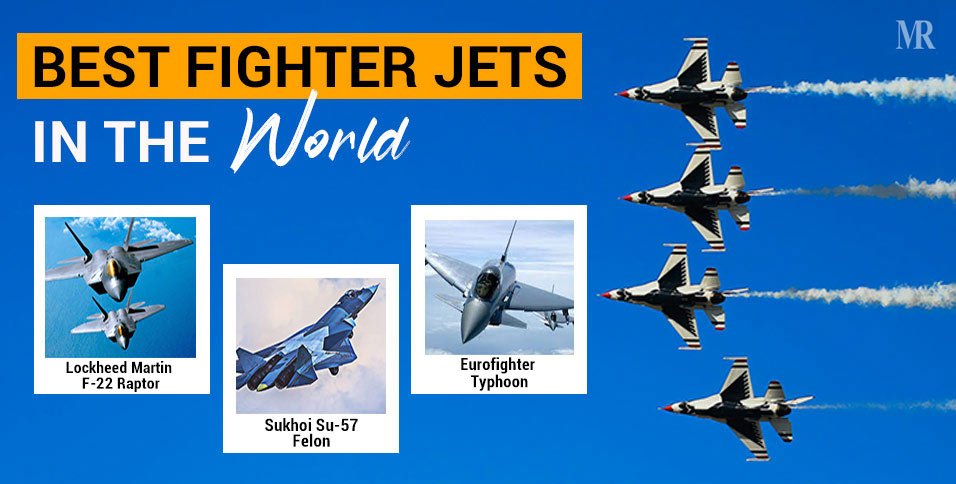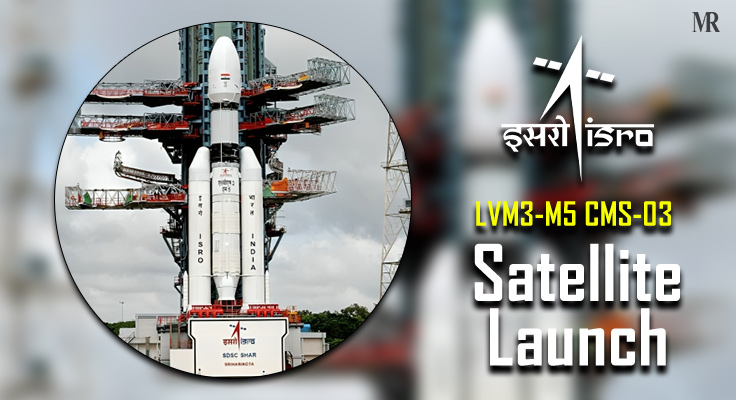In the high-stakes race for air dominance, the best fighter jets in the world are no longer judged by speed or firepower alone. No longer defined by speed or firepower alone, today’s best jets fuse stealth, AI, and battlefield connectivity into lethal platforms of intelligence. In 2025, “best” means more than specs—it’s about how seamlessly a jet gathers, shares, and acts on data in the chaos of combat. Sensor fusion, AI-assisted decision-making, modular upgrades, and lifecycle efficiency now rival traditional metrics like top speed or unit cost. This list goes beyond surface-level comparisons. It explores the operational depth, strategic value, and hidden advantages that make a fighter jet a true game-changer. From next-gen U.S. platforms to emerging Chinese powerhouses and European innovations, we evaluate what really defines air superiority in today’s evolving battlespace. This isn’t just a list—it’s a mission-critical analysis.
Understanding the Metrics: What “Best” Really Means
We must go beyond raw numbers because qualitative performance shapes real-world value.
Sensor fusion acts like the jet’s brain. It merges radar, IRST, and EW feeds into one clear picture. It boosts situational awareness, slashes pilot workload, and helps in precise targeting. For example, the F‑35’s Distributed Aperture System (DAS) fuses with its AESA radar to give a full 360° view, literally letting a pilot “see through” the aircraft.
Furthermore, network‑centric warfare turns a jet into a team player. It connects through Link 16 or advanced data links to share real‑time data with aircraft, bases, satellites, and drones. As a result, fighters hand off targets faster, think quicker, and operate more effectively as a unit. In modern war, stealth or speed alone can’t match this synergy.
Then, pilot‑machine interfaces and AI integrations streamline operations. Pilots use helmet displays, voice control, and smart cockpits. Meanwhile, AI assists with sensor management and threat ranking. It even suggests tactics, shortening each Observe-Orient-Decide‑Act loop. The NGAD program, along with drones like the Kratos XQ‑58A Valkyrie paired with Shield AI’s Hivemind, shows that AI co‑pilots and wingmen are already real.
Finally, we must factor in the total cost of ownership, not just the $80 million unit price. Life‑cycle costs include:
- Maintenance for stealth coatings and software updates
- High fuel burn—F‑35 burns ~5,600 L/hour, costing ~$4,480/hour at $0.8/L
- Pilot and crew training
- Ongoing upgrades to stay mission‑ready
An F‑35 fleet’s $2.1 trillion lifetime cost illustrates how operational costs dwarf purchase price and shape affordability for nations.
Here’s the list of the 10 best fighter jets in the world
| Aircraft | Why It’s Amongst the ‘Best’ | Unit Cost (Approx.) | Top Speed | Combat Range (km) | Special Features |
| Sukhoi Su-57 Felon | The most agile fighter jet | $50 million | Mach 2.0 (~2,450 km/h) | 1,500 | Advanced thrust-vectoring engines, stealth, internal weapons bays |
| Lockheed Martin F-35 Lightning II | The most capable multi-role aircraft | $80-90 million | Mach 1.6 (~1,975 km/h) | 1,100 | Sensor fusion, advanced stealth, network-centric warfare |
| Chengdu J-20 Mighty Dragon | Stealthy, heavily armed multirole aircraft | ~$110 million | Mach 2.0 (~2,120 km/h) | 1,200 | Large internal payload (~24,000 lb), stealth, AESA radar |
| Lockheed Martin F-22 Raptor | The stealthiest and most expensive fighter | $150 million | Mach 2.25 (~2,410 km/h) | 1,840 | Superior stealth, supercruise, advanced avionics |
| Boeing F-15EX Eagle II | The most heavily armed fighter jet | $100 million | Mach 2.5 (~2,660 km/h) | 1,667 | 12 hardpoints, large payload capacity, digital cockpit |
| General Dynamics F-16 Fighting Falcon | The most widely used fighter jet | $30-40 million | Mach 2.0 (~2,124 km/h) | 550 | Versatile, cost-effective multirole platform |
| Sukhoi Su-35 | Incredible dogfighter | $85 million | Mach 2.25 (~2,700 km/h) | 1,600 | Thrust vectoring, Irbis-E radar (400 km detection), extreme agility |
| Eurofighter Typhoon | Agile and capable multirole aircraft | $90 million | Mach 2.0 (~2,495 km/h) | 1,389 | Advanced avionics, supercruise, multirole flexibility |
| Boeing F/A-18E/F Super Hornet | Effective, versatile, and tough | $70 million | Mach 1.8 (~1,915 km/h) | 1,250 | Carrier-capable, robust airframe, advanced radar systems |
| Dassault Rafale | An agile, heavily armed, and expensive fighter | $100 million | Mach 1.8 (~1,912 km/h) | 1,852 | Omnidirectional sensor fusion, multi-role, nuclear capability |
1. Sukhoi Su-57 Felon
Sukhoi Su‑57 Felon ranks among the best fighter jets in the world thanks to its stealth, super‑maneuverability, and heavy payload. It uses angular design, radar‑absorbent composites (~25% of airframe), internal weapon bays, and serrated engine nozzles. As a result, its estimated radar cross‑section sits around 0.3 m²—far higher than the F‑22’s ~0.001 m², yet still a stealth leap over legacy jets.
It blends stealth with agility via thrust‑vectoring nozzles and swept wings. These features let it fly at over Mach 2 and hit angles above 60°, enabling impressive close‑combat moves like the Kulbit or Cobra maneuver. It equips the powerful AL‑41F1 engine producing ~142 kN afterburner thrust, and it can supercruise at Mach 1.3 without afterburner. Russia plans to upgrade to Izdeliye 30 engines by the late 2020s.
However, this jet faces challenges. It costs over $50 million per unit, and low production (around 30 built, 15–29 operational) limits widespread deployment. Sanctions hinder key electronics and materials, and its radar (“Byelka”) lags Western rivals in range and resolution. Moreover, Russia cannot yet scale to its goal of 76 jets by 2028.
In modern air forces, the Su‑57 serves as a multirole air superiority and strike fighter. It can engage enemy fighters and attack ground targets in a single mission. Yet due to low numbers, it often operates alongside Su‑35 or older jets for comprehensive coverage. Its blend of speed, stealth, and firepower still earns it a top spot among the best fighter jets in the world.
2. Lockheed Martin F-35 Lightning II
Lockheed Martin F‑35 Lightning II earns its place among the best fighter jets in the world thanks to stealth, sensor fusion, and networked operations. Its sleek shape reduces radar visibility, while its AESA radar and Distributed Aperture System share real-time data. Therefore, pilots detect threats faster and react smarter. Additionally, the F‑35 connects with other jets, bases, and satellites via Link 16 and advanced data links. Thus, it acts not just as a jet but as a critical node in a complex battlefield network.
Its cockpit features a smart helmet, intuitive displays, and voice commands. Furthermore, AI supports pilots by managing sensors, ranking threats, and even suggesting tactics. For example, Block 4 upgrades now enable drone teaming—letting the F‑35 command loyal wingmen drones during missions . Its versatility allows air-to-air, strike, and electronic-warfare missions in one flight, making it a true multirole workhorse in modern air forces.
However, challenges persist. The jet costs US$82.5 million for the A variant and up to $109 million for the B variant . Operational costs stand at about US$42,000 per flight hour . Furthermore, sustainment will exceed US$1.58 trillion over its lifespan . Finally, it sees only ~51–60% mission availability, remains grounded due to parts and software delays, and runs about 857 unresolved deficiencies .
The F‑35 fits prime roles in modern air forces. It operates as a networked multirole strike fighter with air-to-air, ground-attack, and electronic-warfare capability. Many nations adopt it as their cornerstone combat jet. Despite its high cost and logistical demands, its unmatched integration and adaptability secure its status among the Best Fighter Jets in the World.
3. Chengdu J-20 Mighty Dragon
The Chengdu J‑20 Mighty Dragon earns a spot among the best fighter jets in the world. All because of its front-angle stealth and long-range strike capability. It uses radar-absorbent materials and internal weapon bays. As a result, it carries four medium or long-range missiles internally plus two short-range missiles externally, boosting surprise firepower. Additionally, its larger fuselage holds more fuel—about 15,770 L—so it flies 3,000 nmi (5,926 km) without refueling. Longer range means deeper reach and more time on station.
Its upgraded Chinese WS‑10C engine lets it supercruise at Mach 1.8. Moreover, planned WS‑15 engines with 3D thrust vectoring will add maneuverability like the F‑22. Furthermore, China has built over 200 J‑20s so far, and it now makes about 100 per year. That scale gives the People’s Liberation Army Air Force a fifth-generation backbone.
However, the J‑20 faces challenges. Its stealth works mainly head‑on due to front canards and less advanced shaping. Also, early jets used Russian AL‑31 engines, which limited agility. Finally, at about US$110 million per unit, it remains costly despite rapid production.
China uses the J‑20 mainly for air superiority and deep-strike missions. It serves as a high-end multi-role fighter within its brigades. Therefore, it complements older aircraft, allowing stealth missions. As a result, the J‑20 earns its place among the best fighter jets in the world with its mix of stealth, long range, and mass deployment.
4. Lockheed Martin F-22 Raptor
The Lockheed Martin F-22 Raptor truly deserves its place among the best fighter jets in the world. It was designed with one clear goal—complete dominance in the air. But what sets it apart isn’t just its speed or stealth. It’s the way all its features come together in perfect sync.
Let’s break it down.
- Unmatched Stealth: The F-22 uses radar-absorbing materials and internal weapon bays. This makes it nearly invisible on enemy radars.
- Supercruise Capability: It can fly at Mach 1.8 without using afterburners. This saves fuel and improves range in combat.
- Agility and Speed: With thrust vectoring and an advanced flight control system, it turns sharper than any jet. Pilots say it feels like flying with your mind.
- Situational Awareness: Its sensor fusion gives pilots a real-time 360° view. This turns battles into one-sided fights.
- Combat Radius: The F-22 can cover over 800 km (over 500 miles) without refueling.
However, this perfection comes at a cost.
- The F-22 is expensive to maintain—each flight hour costs around $70,000.
- It’s no longer in production. The U.S. capped it at 187 units due to budget cuts and evolving warfare needs.
- It lacks upgraded data-link capabilities when flying with newer jets like the F-35.
Despite these drawbacks, in terms of pure air superiority, the F-22 has no equal. It is not built for bombing runs or ground support. Instead, it secures the skies so other jets can do their jobs.
Think of the F-22 as the goalkeeper in a football match. It’s not scoring goals, but without it, you’re never winning the game.
In a world moving toward multi-role platforms, the Raptor still holds its ground as the world’s best aerial defender—a guardian of the skies.
5. Boeing F-15EX Eagle II
The Boeing F-15EX Eagle II proves that old designs can evolve smartly. While it looks similar to the older F-15, what’s inside makes all the difference. It has a digital backbone, an open mission systems architecture, and the world’s fastest mission computer for a fighter jet. These upgrades allow the jet to process data 87 times faster than previous F-15s. That’s game-changing in modern warfare, where speed and smart systems win battles.
This fighter also carries more weapons than any other US fighter. It can load up to 29,500 pounds of weapons and supports hypersonic missiles, including the AGM-183 ARRW. It flies at Mach 2.5—one of the fastest in the skies today—and has a combat range of over 1,100 miles. That makes it deadly and far-reaching without needing frequent refuels.
Its flyaway cost is around $90 million (2025), which is lower than fifth-gen jets like the F-35, making it a cost-effective powerhouse.
However, the F-15EX is not stealthy. That limits its use in missions that require deep penetration into highly defended enemy areas. Also, while it’s fast and deadly, it’s not as agile as modern stealth fighters.
Still, the jet fills a key role. It acts as a missile truck and an air dominance platform, supporting stealth jets like the F-22 and F-35. Its job? Carry more firepower, fly longer, and command the battlefield with electronic warfare support.
In short, the Boeing F-15EX Eagle II earns its place among the best fighter jets in the world because it blends proven design with modern tech. It’s fast, affordable, and fully equipped to support both current and future combat missions.
The Future of Air Combat: Beyond 2025
What will define the best fighter jets in the world beyond 2025? The answer lies in stealth, speed, data, and AI-driven decisions.
Programs like the U.S. Next Generation Air Dominance (NGAD), UK-Japan-Italy’s Global Combat Air Programme (GCAP), and Europe’s FCAS/SCAF are shaping this future. These jets will not fly alone. Instead, they’ll team up with loyal wingmen—AI-powered drones that fight alongside them. That’s not science fiction anymore. In fact, the UK plans to fly its GCAP demonstrator by 2027 (RAF, 2024).
AI is not just an add-on. It will control parts of the mission, help pilots plan faster, and even act in split-second combat decisions. These aircraft will have adaptive engines that self-adjust mid-flight, and advanced sensor fusion that delivers real-time battlefield awareness. They might also carry directed energy weapons, like high-power lasers, making dogfights more precise and silent.
Moreover, fighter jets are evolving into flying data hubs. Victory will go to the side that gathers and acts on intel fastest. In fact, the US Air Force’s Digital Century Series points to this shift. Hypersonic threats—missiles flying over Mach 5—are forcing redesigns. New fighters will need stronger sensors and faster evasion algorithms to survive.
In short, the best fighter jets in the world after 2025 will not be judged by speed alone. They’ll be platforms of intelligence, autonomy, and network dominance.
Key Takeaways
When we talk about the best fighter jets in the world, we often obsess over stealth or speed. But 2025 is shifting the narrative. The new gold standard isn’t just how invisible or fast a jet is—it’s how adaptable it is across real combat scenarios. That’s where the F-15EX, despite lacking full stealth, is turning heads. It’s not trying to be futuristic; it’s trying to win wars.
Here’s the twist—modern air dominance isn’t a solo game anymore. Fighter jets are no longer just weapons; they’re strategic nodes in a larger kill web. A jet that talks to drones, manages payloads, and integrates with ground control? That’s the real flex now. And the F-15EX does just that.
Ironically, the rise of AI in combat makes older designs more relevant, not less. Why? Because predictable reliability is key when deploying unmanned assets alongside. Newer doesn’t always mean better—smarter does.
In short, the best fighter jets in the world are no longer defined by Hollywood glamour. They’re defined by battlefield IQ, tactical versatility, and sustainable firepower. And in that race, legacy platforms with modern brains might just outrun the sleekest new kids on the block.












